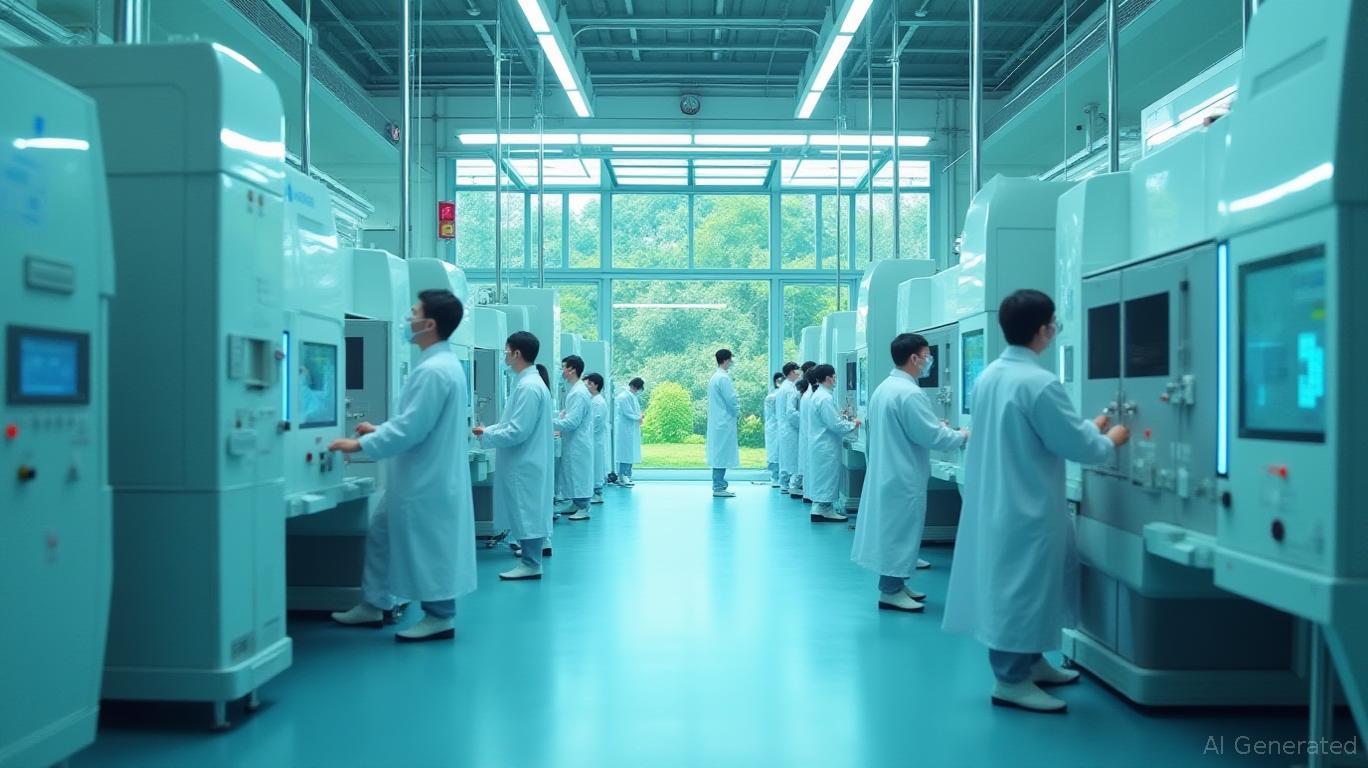TSMC: The Indispensable AI Infrastructure Play with a Shield Against Volatility
In the heart of the AI revolution, one company stands as the linchpin of progress: Taiwan Semiconductor Manufacturing (TSMC). While pure-play AI stocks like NVIDIA (NVDA) capture headlines, TSMC's strategic dominance in chip fabrication and its diversified revenue streams make it the safer, undervalued bet for long-term investors. Here's why TSMC is not just an investment—it's a necessity.
The CoWoS Advantage: Fueling the AI Engine

TSMC's CoWoS (Chip-on-Wafer-on-Substrate) technology is the backbone of modern AI chips. By enabling high-bandwidth memory (HBM) stacking and heterogeneous integration, CoWoS allows companies like NVIDIA and AMD to build the powerful GPUs and accelerators driving AI innovation.
In 2025, TSMC's CoWoS capacity is set to surge from 35,000 to 135,000 wafers/month by 2026, directly addressing the insatiable demand for AI infrastructure. NVIDIA alone accounts for 63-70% of TSMC's CoWoS-L capacity, while AMD, Qualcomm, and others rely on the same tech. This isn't just a supplier relationship—it's a symbiotic ecosystem where TSMC profits regardless of which AI player wins.
Diversified Revenue: A Hedge Against AI Volatility
While AI stocks like NVDA face risks of overvaluation and competitive disruption, TSMC's portfolio is a fortress of stability:
- Smartphones (28% of 2025 revenue): TSMC manufactures chips for Apple's iPhones, Samsung, and others. This segment alone provides a $23 billion annual cash flow, insulated from AI adoption cycles.
- Automotive/IoT (15% growth in 2024): As cars and smart devices demand advanced semiconductors, TSMC's partnerships with Tesla, Bosch, and Amazon ensure steady demand.
- Enterprise (20% of revenue): Data centers and cloud infrastructure require TSMC's 3nm and 5nm chips for non-AI workloads, creating a reliable base.
This diversification means TSMC's earnings remain robust even if AI demand falters.
Billionaire Investors Are Already Buying
Billionaires like Stanley Druckenmiller and Stephen Mandel have quietly exited NVIDIA over the past year, citing valuation risks and competitive threats. Instead, they've plowed capital into TSMC:
- Druckenmiller's Duquesne Family Office quintupled its TSMC stake to 3.3% of its portfolio.
- Mandel's Lone Pine Capital added 104,937 shares in Q1 2025.
Their rationale? TSMC's P/E of 21 (vs. NVIDIA's 30) and its neutral beneficiary role. TSMC doesn't bet on AI success—it profits from every AI success.
Defensive Moats Against Risks
Even as AI faces geopolitical headwinds (e.g., U.S.-China tensions) and commodity price swings, TSMC's strategies mitigate these risks:
1. Geopolitical Diversification: TSMC's $100 billion U.S. expansion (three new fabs, two packaging facilities) ensures it can serve global demand without over-reliance on Taiwan.
2. Tech Leadership: Its 3nm and upcoming 2nm processes are 1–2 years ahead of rivals, locking in foundry dominance.
3. Order Backlog: Its Arizona factory is already sold out through 2027, guaranteeing visibility.
Why Act Now?
TSMC is undervalued relative to its growth prospects. With AI-related revenue projected to grow at a 45% CAGR, and $165 billion in U.S. investments solidifying its global footprint, this is a buy-and-hold opportunity.
Conclusion: The AI Revolution Needs TSMC—And So Should You
While pure AI stocks like NVDA offer high upside, they also carry high volatility. TSMC's diversified revenue, irreplaceable tech, and billionaire-backed valuation make it the most resilient play in the AI era.
Act now: TSMC isn't just a semiconductor stock—it's the infrastructure of the future.

Invest with conviction in the company that powers every AI breakthrough.

Comments
No comments yet